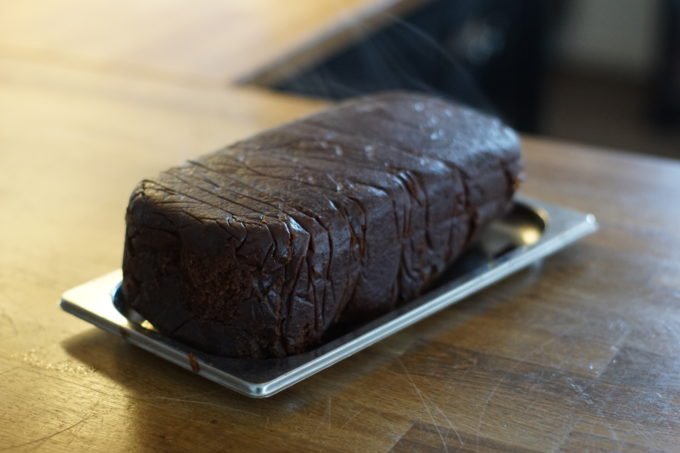
You’ll Need Your Own Hot Spring to Make this Bread at Home

You’ll Need Your Own Hot Spring to Make this Bread at Home
Hverabrauð in Iceland
It was a brutal winter day in South Iceland, but I wasn’t about to complain. We’d only barely made it to Hveragerði, about 25 miles east of Reykjavik, in a snowstorm.
Arriving at the Frost og Funi (“Frost & Fire” in English) inn, I was met by a crowd of snowed-in tourists, stocking caps and woolly gloves strewn across its restaurant, Varma. Apparently the road had closed as we were on it.
Having growing up on the blustering Canadian prairies, I’ve had my fair share of snow days and school indoor recesses. The best way to avoid cabin fever from spiraling into “The Shining,” according to personal experience, is to keep busy.
So I popped into the kitchen to see what I could learn about Varma’s hot-spring cooking techniques. Hveragerði is located directly on top of one of Iceland’s most active geothermal fields, enveloped by tall steamy billows. Some even call it the hot-spring capital of the world.
The restaurant uses the subterranean heat to cook lamb shank, duck thigh, carrot cake, and even stocks and gravies. I’d come at the right time—they were just about to pop a batch of hverabrauð, or “hot spring bread” down the hole.
“Before this hotel was here, there was an old woman living here (on the grounds),” head chef Emil Örn Valgarðsson told me, pulling a metal baking pan filled with bread dough out of the fridge. “I would go fishing in the river next to us as a child and she was cooking rye bread and potatoes in the hot spring. So when I started here four years ago I decided to use it as much as I could.”
The dough, made in the mornings, is dark brown, thick, and sticky. Valgarðsson perfected Restaurant Varma’s recipe after countless times, experimenting with measurements and cooking duration according to the hot springs’ temperature, about 212 degrees Fahrenheit.
Hverabrauð, pronounced, “roog-bread,” is a breakfast staple in Iceland. Throughout history, Icelanders have used their country’s hot springs for cooking, but also washing clothes and bathing. A trade monopoly was imposed by Denmark onto its island territory during the 17th and 18th centuries, and rye was a main import. Hverabrauð was known to keep for a long time, and it remains a staple of Icelandic cuisine—albeit these days, baked in ovens powered by renewable hydro and geothermal energy.
I trekked outside with two of Valgarðsson’s chefs, one toting the enclosed tin under her arm, to the trapdoor. The snowstorm was still raging, wind thrashing me back and forth on the open terrain like a professional boxer. I stood back as they hoisted open the heavy metal hatchway to reveal a pit of violently gurgling brown water. They worked swiftly as one chef, wearing silicone oven gloves, fished out an earlier batch and the other threw in the new one. They fought the lid back down and we trudged inside, cheeks rosy.
After 12 hours of baking, this rúgbrauð was finished. Valgarðsson’s crew popped it out of the pan onto the table, still steaming. That first slice was melty utopia—heavy, but still incredibly moist and a little sweet.
The next morning, Mother Nature still hadn’t calmed down. But at least there was hot-spring bread at breakfast, slathered in butter, with a thick layer of salmon on top.